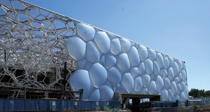Geometry is at the very core of architectural design, from the very early conceptual form finding to the more detailed assembly and construction. In prac-tice, architecture designers are showing an increasing interest in being able to compute and fabricate non-simple and occasionally, intricate, geometric forms.
Contemporary approaches to modeling architectural geometry are computational. This is reflected in designers wanting much more parametric control over the generative process—in turn, this enhances the efficiency with which they can navigate design variations, analyze design artifacts and explore design manifestations. However, to construct geometry, parametrically and computationally, poses challenges for the architecture designer, particularly to those with little formal geometry training, and more so, when required to tackle evolving issues between complex geometry and architecture.
This emerging need has compelled a better understanding of concepts that support geometric constructions, to develop new (computational) schemes that can intelligently or ably assist designers in managing geometry data and propagating designs. |

The roof of the Olympic Stadium in Munich,
Germany, which is a minimal surface.

Beijing’s Watercube, derived from spatial Voronoi cells.
|

